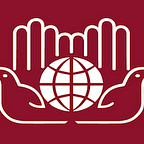Sex Trafficking: A Domestic Humanitarian Crisis
New York — Sexual slavery is often perceived as a phenomenon happening in brothels in India or in Hollywood movies like Taken. The United States, however, has seen an 846% increase in child sex trafficking reports in the last five years alone, says the National Center for Missing and Exploited Children (NCMEC).
“If you think it’s not happening where you live it is and it happens to every race, every ethnicity, every economic group,” said Sergeant Faoud Zahirudin, NYPD Detective on the Vice Enforcement Division’s Human Trafficking Team, at a panel discussion hosted by the Institute of International Humanitarian Affairs at Fordham University last week.
IIHA Helen Hamlyn Senior Fellow Judy Benjamin, Ph.D. moderated the discussion between Nickelsberg and Zahirudin as well as advocates Serena Curry, Safe Harbour Coordinator at The Safe Center LI, and Ane Mathieson, Lead Program Specialist with the Justice and Empowerment for Teens program at Sanctuary for Families.
The event accompanied the IIHA spring photo exhibition, No Safe Harbor, a collection of photos on the sex trade in the United States by Getty Images photographer Robert Nickelsberg. His work illustrates this issue in cities across the US from the perspective of both law enforcement and advocates who seek to curtail exploitation as well as survivors willing to share their stories.
“The social safety net is broken in this country, especially in poverty-stricken neighborhoods. These girls’ youths are gone, their identity shattered, and many do not get the chance to survive,” said Nickelsberg.
“A lot of these girls are either coming from a broken home or they’ve been abused, emotionally or physically…These guys (the pimps) are predators and they know how to groom them by building a boyfriend-girlfriend relationship to get them into “the life,” added Zahirudin.
The Polaris Project estimates that “hundreds of thousands” adults and minors are trapped in situations of sex or labor trafficking across the United States.
As traffickers increasingly move their operations from the “tracks”, or streets, to online platforms, the industry grows. According to the NCMEC, 70 percent of the increase in child trafficking reports involved ads on Backpage.com, a classifieds site shut down by the FBI in early April.
“There are tracks everywhere, but now with the advent of the internet, pimps can easily sell girls on sites like Backpage. Yes, it was shut down, but they have just moved on to other websites. A door closes, and a window opens,” said Zahirudin.
Mathieson advocates for a law enforcement approach that prosecutes these perpetrators — the buyers and the traffickers — who benefit from exploitation, not victim or survivors.
While Safe Harbor Laws in New York and 33 other states protect minors facing commercial sexual exploitation from prosecution, adults forced in the sex trade are often convicted as criminals, regardless of the coercive nature of their recruitment.
“In the United States, one in seven men say they have bought a person for sexual exploitation, yet commercial sexual exploitation is the only crime where the victims are more likely to be arrested than the perpetrators. Buyers are disproportionately white, middle-class men with families. They have disposable income and are in positions of power. They’re not held accountable. We want to change attitudes so people recognize they’re causing harm when buying sexual access,” said Mathieson.
“The vast majority of people in the sex industry would like to leave and would if they had the full range of services,” she continued.
The Safe Center is one institution providing services to survivors on Long Island. The center operates as a “one-stop-shop” for clients to access an array of services including Child Protective Services, medical care, law enforcement, legal assistance and victim advocacy.
“Our systems are starting to pick up. There are more places where we are failing [our young people] than we are succeeding, but we are improving and trying to do the right thing,” said Curry.
The No Safe Harbor exhibition is currently on display on the 2nd Floor of Canisius Hall at Fordham University Rose Hill and is open for viewing Monday through Friday, 10 am to 4 pm. No Safe Harbor is the second IIHA exhibition, following the fall exhibition Horrors of War: From Goya to Nachtwey.
